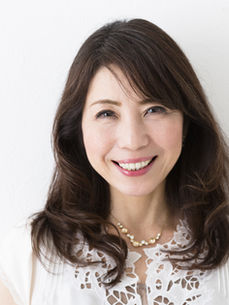
HAIR RESTORATION
MICRONEEDLING
Hair loss is a common problem that affects many people, and it can be a significant source of stress and anxiety. Losing one's hair can lead to a loss of confidence, as it can significantly affect our overall well-being.
But you're not alone; the concern of hair loss is a common issue. Research estimates suggest that approximately 50% of men and 40% of women will experience some form of hair loss by the time they reach the age of 50.
Even so, dealing with the emotional impact of hair loss can be challenging, especially if it happens suddenly or at a young age. For many people, their hair is an essential part of their identity, and losing it can be devastating.
Because of this, many traditional and modern or both combined have been tried and tested to grow hair back on one's scalp. Hair transplants, medication, and other treatments.
Among various hair growth treatments and procedures, one that has garnered significant attention recently is microneedling. This non-invasive method is often associated with skincare, but it has been proven to successfully promote scalp health and hair growth, treating...
-
Hormonal (androgenic) or hereditary hair loss
-
Tired and dehydrated hair
-
Slow hair growth
Scalp microneedling is shown to be more effective for androgenetic alopecia (male/female pattern hair loss), and alopecia areata (patchy hair loss). It may also be useful in some cases of chronic telogen effluvium.
For those who don't know, microneedling is a dermatological procedure that involves creating microscopic punctures in the skin using tiny, sterile needles. This process instigates the body's natural healing response, stimulating collagen production and increasing the absorption of topical treatments.
These tiny holes are so small that they don't hurt much and heal quickly, but they are just enough to trick your body into a "repair mode."
Just like the body would rush to heal a cut or a bruise, it also rushes to repair these tiny holes. The repair process includes increasing blood flow and boosting the production of collagen. This protein strengthens and improves the quality of your skin.
-
Non-surgical natural process
-
Dramatically increases topical treatment penetration and absorption
-
Pain free process, just a moderate tickling/pricking sensation
-
Supports collagen and elastin repair
-
Can be used over all areas of the scalp
HOW DOES IT WORK?
Micro-needling is a process called collagen induction therapy (CIT). CIT is the skin’s own ability to repair itself.
During this revolutionary procedure, a small, electronic instrument containing tiny needles moves over the skin to create thousands of microscopic channels in both the epidermis and upper dermis of the skin. The body responds to this controlled wound healing the same way it would to an injury by releasing powerful growth factors to stimulate not only collagen, but also hair cell growth.
Not only that, it also increases blood flow to your scalp, bringing more nutrients to your hair follicles and ultimately leading to healthier and stronger hair.
By microneedling your scalp, you're creating the perfect conditions for hair growth. Plus, this treatment makes it easier for topical products to penetrate deep into your scalp where they're needed most.
These "micro-channels" allow for deeper penetration of pharmaceutical solutions, resulting in higher efficacy.
WHAT PHARMACEUTICAL SOLUTIONS DO YOU USE?
At Westfield Clinic we use CLINICCARE's Hair Energy mesotherapy by 4T Medical.
The Hair Energy mesotherapy cocktail has a unique combination of active ingredients (see below) specially designed to maintain scalp vitality and act on follicle dysfunctions in order to achieve good anti-hair loss results and improve hair quality.
It combines antioxidant and anti-inflammatory effects with a hair growth-stimulating effect.
-
Hydrolyzed Collagen – Provides specific amino acids necessary to replenishing the body’s collagen. Corrects weak, broken, split and damaged nail beds. Thickens fine hair and slows down hair loss.
-
Citrullus Colocynthis Fruit Extract – Stimulates hair growth, with an effect comparable to finasteride.
-
Velvet Extract – Promotes hair growth by regulating the hair cycle and cell proliferation in hair follicles.
-
Angelica Acutiloba Root Extract – Protects from hair loss and promotes hair growth.
-
Rheum Palmatum Root Extract – Protects from hair loss and promotes hair growth.
-
Centella Asiatica Extract- Increases the supply of blood to the capillaries under the skin and can improve the health and condition of the skin’s surface layers. It can also stimulate hair growth by delivering an increased flow of oxygenated blood to the hair follicles.
-
Polygonum Cuspidatum Extract – Activates collagen, increases fibroblasts and hair follicles and reduces inflammatory cells.
-
Scutellaria Baicalensis Root Extract – A good antiviral, antibacterial, antifungal, and anti-inflammatory agent.
-
Camellia Sinensis Leaf Extract (Green tea) – Has anti-inflammatory effects, known to prevent hair loss and encourage hair regrowth.
-
Glycyrrhiza Glabra Root Extract – Promotes hair growth, even faster than Minoxidil.
-
Chamomilla Recutita Flower Extract – Has healing and anti-inflammatory properties.
-
Rosmarinus Officinalis (Rosemary) Leaf Extract – Used for preventing and treating baldness, as well as treating circulation problems, eczema, and for wound healing.
-
Panthenol – Functions as a humectant that increases the water content of hair and improves its elasticity. Panthenol is inactive but is readily converted to pantothenic acid in the skin. Pantothenic acid is then incorporated as an important component in the energy cycle of the cell.
-
Panthenol can also attract water into the upper layer of the skin and is thus effective as a moisturizer and softener.
-
Olea Europaea (Olive) Fruit Oil – A healing elixir, rich in essential fatty acids that impart moisture directly to the hair and scalp.
WHAT OTHER CONDITIONS CAN MICRONEEDLING TREAT?
Thinning hair - Wrinkles - Enlarged Pores - Scarring - inc acne scars - Loose Skin - Stretch Marks - Hyperpigmentation and Uneven Skin Tone - Uneven Skin Texture - Dull Skin Tone. For other microneedling areas visit our page here.
WHAT HAPPENS DURING THE TREATMENT?
Following consultation, your skin is cleansed and sanitised, CLINICCARE's Hair Energy mesotherapy cocktail is applied, microneedling is performed with a medical grade needling pen at varied depths depending on skin concern, area, and where you are in your course.
A soothing post-procedure cream and spf is applied.
DOES IT HURT?
No. There may be some very mild discomfort but the treatment is generally very well tolerated.
It is not advised to use numbing cream pre-treatment, as numbing cream causes vasoconstriction.
ARE THERE ANY SIDE EFFECTS?
After microneedling, your skin will likely turn a little red/pink which generally lasts a few hours but may be longer. Your skin might also look a little blotchy or be a little swollen. Avoid microneedling if you wish to attend an event within 48 – 72 hours post-treatment. Avoid microneedling if you are feeling unwell or under the weather.
HOW MANY TREATMENTS WILL I NEED?
it is recommended to have a course of between 5 and 10 treatments with 1-2 week intervals.
Maintenance treatment every 3-6 months to maintain results.
This is dependent on many factors such as age, general health, and the type, duration and severity of hair loss being treated. As a general rule, an improvement is more likely to be seen after 3 months of treatment
IS IT SAFE?
Infection control is taken very seriously at Westfield Clinic. The skin is carefully assessed and prepared. The treatment is performed using single-use sterile needle cartridges in a protected CE-approved microneedling device.
Medical Micro-Needling is an option that even those with a fear of needles can consider, as they are so small and within the cartridge that you don't see them.
Please note I do not use micro-needling rollers, these are not recommended.
WHAT IS THE AFTERCARE?
External products after microneedling (such as serums) work best when applied within the first 24 to 48 hours. After that, all the microchannels that you made are closed. When choosing skincare products to apply after microneedling opt for products with a high purity of ingredients, low-irritants and hydrating ingredients (Hyaluronic Acid is amazing)
-
Avoid extended periods in the sun and apply an SPF of 30 or higher when you leave the house - for 7 days.
-
Do not go swimming for at least 48 hours post-treatment.
-
No exercising or strenuous activity for the first 24 hours post-treatment. Sweating and gym environments should be avoided as they can expose you to dirt and bacteria which may cause adverse reactions.
-
It's advisable to avoid washing your hair for at least 4 hours following the treatment.
-
It's also essential to avoid using scalp products with artificial scents for at least a few days post-treatment.
-
You may notice your scalp peeling off a few days post-treatment, similar to when your skin peels after a mild sunburn. This is an expected response as the surface layer of your scalp is renewing itself.
-
You might also experience some discomfort or tenderness on your scalp. This is perfectly normal, considering the numerous micro-injuries caused by microneedling.
-
Should you notice any persistent inflammation in a specific area, make sure to sanitise the area thoroughly with an antiseptic before bedtime.
-
Do not expose your freshly treated scalp to direct sunlight, which can cause unwanted reactions. It's similar to how our skin becomes more susceptible to sunburn when it's just been exfoliated.
-
Wear a hat or head scarf to help to protect your scalp during this healing time.
-
Please do not engage in intense physical activity, as it can cause the scalp to sweat. In the healing period, the scalp is prone to infection from bacteria and dirt.
-
Lastly, sleeping on a clean pillowcase can also help you prevent potential infections.
It's important to remember that there is no one-size-fits-all solution to hair loss.
Additional supporting care can also be a helpful factor in the success of microneedling on the scalp.
For example, using an LED Light Therapy device / Hair Growth Massage Comb regularly on the scalp to fasten the healing process while increasing the stimulation of hair growth.
Some successful cases also include the application of Minoxidil or similar regularly on the scalp.
HOW DO I PREPARE FOR TREATMENT?
To minimise bleeding, please avoid taking anti-inflammatory medication, drinking alcohol or taking fish oil tablets for 3 days prior to your treatment.
Arrive with clean hair and scalp, free of any styling products.
WHAT DOES IT COST?
Half scalp £69. Course of 3 £186. Course of 6 £351 Course of 9 £496
Scalp £99. Course of 3 £267. Course of 6 £504. Course of 9 £712
(Course of 3 - save 10% Course of 6 - save 15% Course of 9 - save 20%)
AM I SUITABLE FOR TREATMENT?
Contra-indications can include:
Botox or Fillers in the treatment area to be avoided 2 weeks prior.
Allergies to local anaesthetic (if using) or ingredients in mesotherapy products.
Pregnant or breastfeeding.
Anti-coagulant therapy – increases potential for bleeding - coagulation status should be
checked to confirm normal clotting/bleeding profile.
Haemophiliacs.
History of keloid scarring.
History of radiation therapy within the application area (6 mths post chemo & radiotherapy).
Raised moles or warts.
Skin cancers – melanoma.
Skin infections including any bacterial, viral, fungal, or herpetic infection.
Wounded, sunburned, excessively sensitive skin.
Inflammatory acne within the application area.
Uncontrolled diabetes.
Active eczema, psoriasis or inflamed/severe rosacea in the area.
Oral retinoids (Roaccutane) used within 6 months prior to treatment.
We recommend carrying out a patch test for Fitzpatrick skin types 4 or above.
Unrealistic expectations
Medications - If you’re taking medications such as Accutane, antibiotics, antidepressants, or medications that cause photosensitivity or high blood pressure, please consult before commencing microneedling.
HAVE THEIR BEEN ANY CLINICAL STUDIES INTO MICRONEEDLING?
Yes, here are some links to studies on the effectiveness of scalp microneedling
https://www.ncbi.nlm.nih.gov/pmc/articles/PMC3746236/
https://onlinelibrary.wiley.com/doi/epdf/10.1111/jocd.14525
https://pubmed.ncbi.nlm.nih.gov/31254437/
and skin rejuvenation here



























